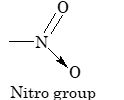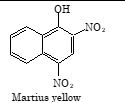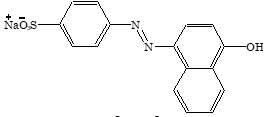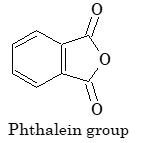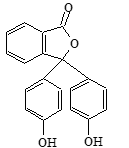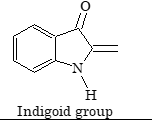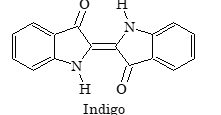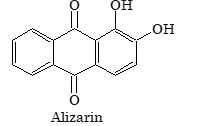Polyhydroxy aldehyde or polyhydroxy ketone or the compounds which can be hydrolysed to them are known as carbohydrates.
Types of Carbohydrates
(i) Monosaccharides: The simple carbohydrates which cannot be further hydrolysed to simpler carbohydrates. Examples: glucose and fructose
(ii) Oligosaccharides: The carbohydrates which on hydrolysis give two to nine units of monosaccharides
- Disaccharides: It gives two units of monosaccharides on hydrolysis, e.g. sucrose and maltose
- Trisaccharides: It gives three units of monosaccharides on hydrolysis, e.g. raffinose (C₁₈H₃₂O₁₆)
- Tetrasaccharides: It gives four units of monosaccharides on hydrolysis, e.g. stachyose (C₂₄H₄₂O₂₁)
(iii) Polysaccharides: These are polymeric molecules, which can be hydrolysed to give large number of monosaccharide units, e.g. (C₆H₁₀O₅)ₙ. Cellulose is a polymer containing approximately 2000–3000 glucose units per molecule
(C₆H₁₀O₅)ₙ + nH₂O → nC₆H₁₂O₆
In general, monosaccharides and oligosaccharides are crystalline solids, soluble in water and sweet in taste. These are collectively known as sugars. The polysaccharides on the other hand are amorphous, insoluble in water and tasteless and are known as non–sugars.
MONOSACCHARIDES
Carbohydrates are either monosaccharides or get converted to monosaccharides on hydrolysis. The general formula is CₙH₂ₙOₙ (n = 3 to 9).
Structure Examples:
Glucose: CH₂OH-(CHOH)₄-CHO
Fructose: CH₂OH-(CHOH)₃-CO-CH₂OH
Glyceraldehyde: CHO-CHOH-CH₂OH
Preparation of Glucose
(i) From sucrose:
C₁₂H₂₂O₁₁ + H₂O → C₆H₁₂O₆ + C₆H₁₂O₆
Sucrose → Glucose + Fructose
(ii) From starch:
(C₆H₁₀O₅)ₙ + nH₂O → nC₆H₁₂O₆
393 K, 2-3 bar, H⁺/hydrolysis
Properties of Glucose
Glucose has one aldehyde group, one primary and four secondary hydroxyl groups. It gives the following reactions:
(i) Acetylation:
CHO-(CHOH)₄-CH₂OH + (CH₃CO)₂O → CHO-(CHOH)₄-CH₂OOCCH₃
(ii) Reaction with hydroxylamine/hydrogen cyanide:
With HCN:
CHO-(CHOH)₄-CH₂OH + HCN → HO-CN-(CHOH)₄-CH₂OH
Glucose cyanohydrin With NH₂OH:
CHO-(CHOH)₄-CH₂OH + NH₂OH → HC=NOH-(CHOH)₄-CH₂OH
Glucose monooxime
(iii) Glucose reduces ammoniacal silver nitrate solution and Fehling's solution
CHO-(CHOH)₄-CH₂OH + 2Cu²⁺ → COOH-(CHOH)₄-CH₂OH + Cu₂O (Reddish brown)
CHO-(CHOH)₄-CH₂OH + Ag₂O → COOH-(CHOH)₄-CH₂OH + 2Ag
Glucose → Gluconic acid
(iv) Oxidation:
CHO-(CHOH)₄-CH₂OH + HNO₃ [O] → COOH-(CHOH)₄-COOH
Glucose → Saccharic acid
(v) Reduction:
CHO-(CHOH)₄-CH₂OH + HI (Prolonged heating) → CH₃-CH₂-CH₂-CH₂-CH₂-CH₃
Glucose → n-hexane
(vi) Reaction with phenyl hydrazine:
D–Glucose reacts with phenyl hydrazine to give glucose phenylhydrazone. If excess of phenylhydrazine is used, a dihydrazone, known as osazone is formed.
D-Glucose + C₆H₅NHNH₂ → D-Glucosazone + C₆H₅NH₂ + NH₃
(vii) Reaction with NaOH:
On heating with concentrated solution of NaOH, glucose first turns yellow, then brown and finally resinifies. However, with dilute NaOH, glucose undergoes a reversible isomerization and is converted into a mixture of D–glucose, D–mannose and D–fructose.
D-Glucose ⇌ D-Mannose ⇌ D-Fructose
Configuration of Glucose
The Fischer projections for D– and L– glucose are shown with their stereochemical arrangements around each carbon atom.
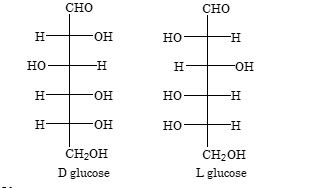
Cyclic Hemiacetal Forms of Glucose
Since methyl glucosides and other derivatives of glucose exist in two isomeric forms, therefore glucose also exists in two forms:
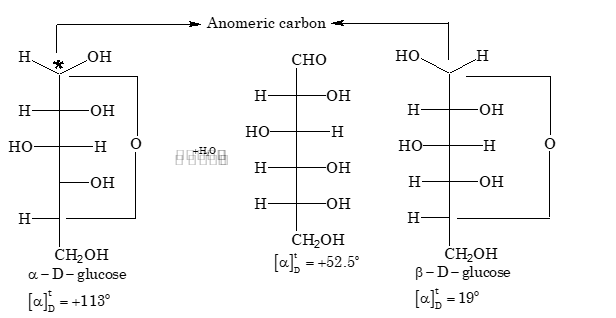
Key Points:
- (a) These two forms of glucose are known as anomers
- (b) The presence of hemiacetal ring confirms the absence of free –CHO group. This is the reason that glucose has no reaction with weak reagents like NH₃ and NaHSO₃
Cyclic hemiketal forms of fructose:
An increase or decrease in the value of specific rotation of an optically active compound is known as mutarotation. Mutarotation is due to interconversion of α form into β form through an open chain aldehyde form.
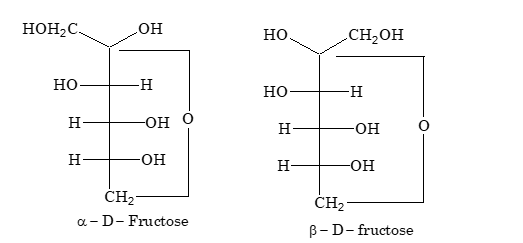
Hemiacetal forms of D–glucose and hemiketal forms of D–fructose are stable in the solid state but in aqueous solutions, the ring structure is opened, which results in a solution of constant specific rotation.

Mutarotation does not take place in cresol solution and pyridine solution, but takes place in a mixture of cresol and pyridine. This shows that presence of amphiprotic solvent is necessary for mutarotation.
Haworth Projections
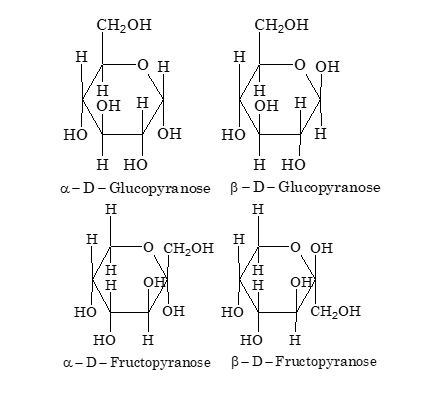
Disaccharides
Carbohydrates which upon hydrolysis give two molecules of the same or different monosaccharides are called disaccharides, e.g. sucrose, maltose etc.
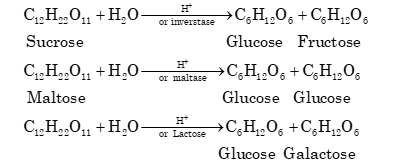
If two monosaccharide units are linked through their respective carbonyl groups, then the disaccharide is known as non–reducing, e.g. sucrose.
If the carbonyl group of any one of the two monosaccharide units is free, the disaccharide is known as reducing, e.g. maltose, lactose etc.
Common Disaccharides:
1. Sucrose:
C₁₂H₂₂O₁₁ + H₂O → C₆H₁₂O₆ + C₆H₁₂O₆
Sucrose + H⁺/invertase → Glucose + Fructose
2. Maltose:
C₁₂H₂₂O₁₁ + H₂O → C₆H₁₂O₆ + C₆H₁₂O₆
Maltose + H⁺/maltase → Glucose + Glucose
3. Lactose:
C₁₂H₂₂O₁₁ + H₂O → C₆H₁₂O₆ + C₆H₁₂O₆
Lactose + H⁺/lactase → Glucose + Galactose
Classification based on reducing property:
- Non-reducing disaccharides: If two monosaccharide units are linked through their respective carbonyl groups, then the disaccharide is known as non–reducing, e.g. sucrose
- Reducing disaccharides: If the carbonyl group of any one of the two monosaccharide units is free, the disaccharide is known as reducing, e.g. maltose, lactose etc.
Inversion of Sugar
Sucrose is dextrorotatory with specific rotation + 66.5°. On hydrolysis in the presence of HCl or enzyme invertase, it produces mixture of D(+) glucose (specific rotation +52.7°) and D(–) fructose (specific rotation = –92.4°). Since, specific rotation of D(–) fructose is greater than D(+) glucose, the resulting solution becomes laevorotatory. As hydrolysis produces a change in optical nature from dextrorotatory to laevorotatory, the process is called inversion of sugar.
Structure of Important Disaccharides
Sucrose (Non-reducing sugar):
Haworth suggested structure shows α(1→2) glycosidic linkage between glucose and fructose units
Maltose (Reducing sugar):
It is prepared by partial hydrolysis of starch by diastase enzyme:
2(C₆H₁₀O₅)ₙ + nH₂O → nC₁₂H₂₂O₁₁
Starch + Diastase → Maltose
On hydrolysis, one mole of maltose gives two moles of D–glucose. It is a reducing sugar.
The two glucose units are linked through a α(1→4) glycosidic linkage between C–1 of one unit and the C–4 of another unit. Both glucose units are in pyranose form.
NUCLEIC ACIDS
Nucleic acids are colourless compounds containing the elements carbon, hydrogen, nitrogen, oxygen and phosphorus.
Nucleic acid → Nucleotides → Nucleosides + Phosphoric acid
(NH₃, 115°C) (NH₃, 175°C)

Differences between RNA and DNA:
| Property | RNA (Ribose nucleic acid) | DNA (Deoxyribose nucleic acid) |
| Location | It occurs in cytoplasm | It is found inside the nucleus |
| Structure | It exists either as single helix or as a double helix | It always exists as double helix |
| Sugar | Sugar is ribose type | Sugar is of deoxyribose type |
| Function | It helps in protein synthesis | It carries genetic continuity |
| Bases | Bases are uracil, cytosine, adenine, guanine | Bases are thymine, cytosine, adenine, guanine |
AMINO ACIDS
The class of organic compound containing both the carboxyl, COOH, and the amino, NH₂ group. These have general formula R-CHNH₂-COOH
Two naturally occurring amino acids differ only in the side chain, R. All amino acids except glycine (H₂N-CH₂-COOH), have a centre of asymmetry at the α position.
Types of Amino Acids
Based on functional groups:
- Neutral: It contains equal number of NH₂ and COOH groups
- Acidic: It contains more COOH groups than NH₂ groups
- Basic: It contains more NH₂ groups than COOH groups
Based on synthesis in body:
- Essential amino acids: which cannot be synthesized in the body. It is supplied through diet
- Non–essential amino acids: which are synthesized in the body
Illustration 1:
Question: One of the essential amino acids is
(A) lysine
(B) glycine
(C) serine
(D) proline
Solution: (A) lysine
Preparation of Amino Acids
(i) By reaction of an α-halogen substituted acid with conc. NH₃:
H₃C-CHCl-COOH + 2NH₃ → H₃C-CHNH₂-COOH + NH₄Cl
→ Alanine
(ii) Strecker's synthesis:
The reaction between cyanohydrin and conc. NH₃ followed by hydrolysis.
R-CHOH-CN + HNH₂ → R-CHNH₂-CN + H₂O → R-CHNH₂-COOH + 2H₂O
Properties of Amino Acids
(i) Physical Properties: The amino acids are crystalline solids with high melting point and dipole moment.
(ii) Zwitterion Formation: They are soluble in polar solvents. They exist as dipolar species called zwitterions.
R-CHNH₂-COOH ⇌ R-CHNH₃⁺-COO⁻
Amino acid ⇌ Zwitterion
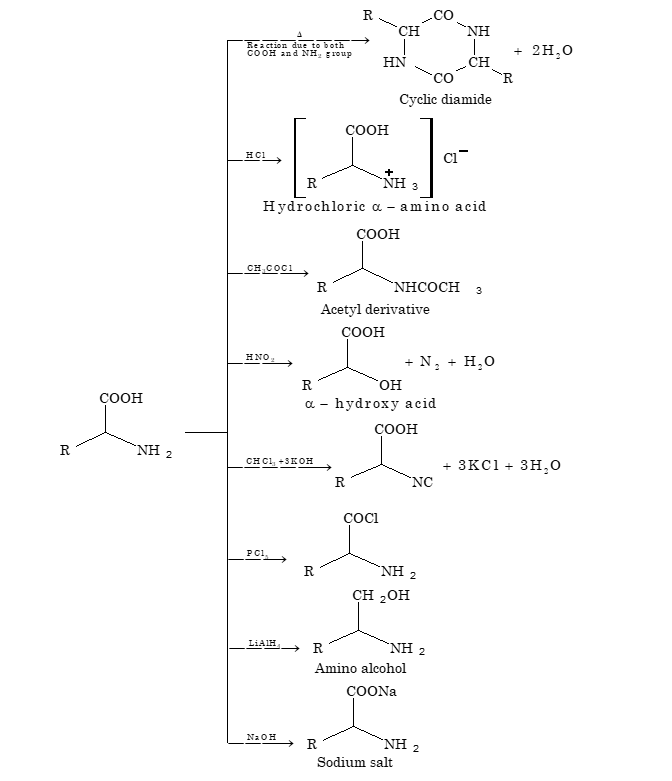
(iii) Isoelectric Point:
In acidic medium, the amino acid exists as cation and moves towards the negative electrode while in basic medium, the amino acid exists as anion and moves towards the positive electrode. The pH at which this dipolar ion stops moving towards the respective electrodes is known as isoelectric point.
At isoelectric point the amino acids have the least solubility in water.
(v) Peptides:
Peptides are the organic molecules with –CONH– linkage. Such a linkage is formed by removal of water molecule from the carboxyl group of one amino acid and the α amino group of the other in the presence of strong condensing agents.
R₁-CHNH₂-COOH + R₂-CHNH₂-COOH → R₁-CHNH₂-CO-NH-CHR₂-COOH + H₂O
(Cyclic diamide formation)
The peptides can be separated on the basis of their ionization behaviour. Peptides can be hydrolysed by boiling with either strong acid or base to give the constituent amino acids in free form.
CHEMISTRY IN ACTION
Dyes are natural or synthetic compounds which are used for imparting permanent colour to fabrics, food and other substances for their beautification.
Classification of Dyes Based on their Constitution
| Type | Structural unit | Examples |
| Nitro dyes |
-NO₂ (Nitro group) |
Martius yellow |
| Azo dyes |
-N=N- (Azo group) |
Orange I |
| Phthalein dyes |
Phthalein group |
Phenolphthalein |
| Indigoid dyes |
Indigoid group |
Indigo |
| Anthraquinone dyes |
Anthraquinone group |
Alizarin |
Illustration 2:
Question: Alizarin gives red colour by mordanting it with the sulphate of a metal. The metal ion is
(A) Ba²⁺ (B) Al³⁺ (C) Cr³⁺ (D) Fe³⁺
Solution: (B). With Al³⁺ ions, alizarin gives red colour.
Classification of Dyes on the Basis of Application
(i) Acid dyes: These are generally salts of sulphonic acids and may also contain carboxylic or phenolic group. These don't have affinity for cotton but are applied to wool, silk and nylon.
Examples: Orange–I and Orange–II, which can be obtained by coupling of diazotized sulphanilic acid with α and β–naphthol.
(ii) Basic dyes: These contain amino group or dialkyl amino group as chromophore or auxochrome. In acidic solution they form water–soluble cations and react with anionic sites present on the fabrics to fix themselves.
Examples: aniline yellow, butter yellow, malachite green. They are used to dye nylons, polyesters, wool etc.
(iii) Direct dyes: These are directly applied to the fabrics from an aqueous solution. These are attached to the fabric through hydrogen bonding and used to dye cotton, rayon, wool, silk etc.
Examples: martius yellow and congo red.
(iv) Disperse dyes: These dyes, as the name implies consists of minute particles which are dispersed or spread from a suspension into the fabric. These are used for polyesters, nylon and polyacrylonitrile.
Examples: celliton fast blue B and celliton fast pink B.
(v) Vat dyes: These are water insoluble dyes, which are reduced to colourless soluble form by alkaline reducing agents like NaHSO₃ and applied to the fabrics and then oxidized to the insoluble dye when exposed to air or an oxidizing agent.
Example: Indigo is common example of vat dyes.
(vi) Mordant dyes: These are the dyes which are applied to the fabric after treating it with a metal ion. The metal ion binds to the fabric and the dye in turn is co–ordinated to the metal ion known as mordant. The colour of the same dye varies with the different metal ions used, e.g. alizarin with aluminium ion is rose red while with barium ion it is blue in colour. These dyes are usually applied for dyeing wool.
Chemicals in Medicines
The branch of science that deals with the treatment of diseases by using suitable chemicals is called chemotherapy.
(i) Antipyretics: These are the chemicals which are used to bring down the body temperature in high fever, but their use often leads to perspiration.
Aspirin is a common example of antipyretic. Some other examples are phenacetin and paracetamol.
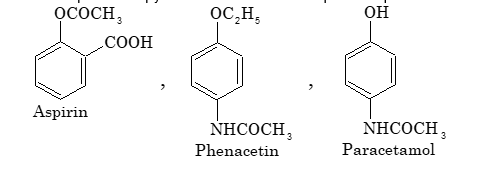
(ii) Analgesics: These are chemicals, which are used for relieving pain. Aspirin and certain other antipyretics also act as analgesics. Some narcotics which produce sleep and unconsciousness like morphine, marijuana, heroin, codeine also act as analgesics.
(iii) Antiseptics: These are the chemicals, which are used to kill or prevent the growth of micro organism. These are not harmful to living tissues and can be applied to wounds, cuts or diseased skin surface. Iodine is a powerful antiseptic. It is used as tincture of iodine (2–3% I₂ solution in alcohol–water mixture). Organic dyes like gentian violet and methylene blue are also used as effective antiseptics.
(iv) Tranquillizers: These are chemicals, which are used for treatment of mental diseases. These are also called psychotherapeutic drugs. These are the constituents of sleeping pills and act on higher centres of central nervous system. Barbituric acid and its derivatives are used as tranquilizers for a long time. Equanil is another tranquilizer which is used in depression and hypertension.
(v) Antibiotics: These are chemical substances produced by micro organism, which prevent the growth or even destroy other micro organisms, e.g. penicillin is very effective drug in case of pneumonia, bronchitis, sore throat and abscesses. Streptomycin is used for tuberculosis and chloramphenicol for typhoid.
(vi) Sulpha drugs: They also act against micro organisms just like antibiotics, e.g. sulphanilamide, Sulphadiazine and sulphaguanidine etc.
Sulphadiazine: H₂N-SO₂NH-N-N (pyrimidine ring)
Illustration 3:
Question: Which of the following set of reactants is used for preparation of paracetamol from phenol?
(A) HNO₃, H₂/Pd, (CH₃CO)₂O
(B) H₂SO₄, H₂/Pd, (CH₃CO)₂O
(C) C₆H₅N₂Cl, SnCl₂/HCl, (CH₃CO)₂O
(D) Br₂/H₂O, Zn/HCl, (CH₃CO)₂O
Solution: (A)
OH → [HNO₃] → OH-NO₂ → [H₂/Pd] → OH-NH₂ → [(CH₃CO)₂O] → OH-NHCOCH₃ (Paracetamol)
Chemistry of Rocket Propellants
The chemical substances (fuel) used to propel a rocket are known as rocket propellants. The constituents of a propellant may be a solid, a liquid or a gas. Depending upon the physical state, the propellants are classified into following types:
(i) Solid propellants:
The most common solid propellant is composite propellant, which is a mixture of polymeric binder like polyurethane or polybutadiene as fuel and ammonium perchlorate as an oxidizing agent along with an additive like finely divided Al or Mg to modify the working of the propellant.
Another widely used solid propellant is double–base propellant, which is made up of nitro glycerine and nitrocellulose. Solid propellants once ignited will burn with a predetermined rate and their ignition cannot be stopped.
(ii) Liquid propellants:
These consists of a mixture of kerosene oil (alcohol hydrazine or liquid H₂) as fuel and liquid O₂ (liquid N₂O₄ or nitric acid) as an oxidizing agent. These bi–liquid propellants give higher thrusts than solid propellants and their ignition can be controlled by controlling the flow of the liquid propellant.
In some cases, a single chemical compound, known as monopropellants acts both as oxidizer and fuel, e.g. methyl nitrate, nitromethane and H₂O₂.
(iii) Hybrid propellants:
These propellants consist of a solid fuel like acrylic rubber and a liquid oxidizer like liquid N₂O₄.
Exercise 1: The propellants used in SLV–3 is
(A) solid
(B) liquid
(C) solid–liquid
(D) biliquid
Relation Between the Specific Impulse and Critical Temperature
The relation between the specific impulse of a propellant and the critical temperature attained in a rocket blast is as follows:
Specific impulse (Iₛ) = √(Tc/M̄)
where, Tc is the critical temperature inside the rocket motor and M̄ is the average molecular mass of the gases coming out of the rocket nozzle.
The energy of propellant is measured in terms of its specific impulse. Higher the value of Iₛ, the better is the propellant (from energy point of view).
Polymers
Polymers (in Greek, poly = many and meros = parts) are very high molecular mass substances each molecule of which consists of a very large number of simple structural units joined together by covalent bonds in regular fashion.
The simple molecules, which on repetition form the polymers are called monomers and the process by which these simple molecules join to convert monomers into polymers is called polymerization.
A polymer may be made by polymerization of a large number of one or more compounds, e.g. polyethylene is made from ethylene (ethene) but nylon–66 is made from H₂N–(CH₂)₆–NH₂ (hexamethylene diamine) and HOOC–(CH₂)₄–COOH (adipic acid).
Polymers and Macromolecules
The terms polymers and macromolecules are often used without any distinction. But strictly speaking, a polymer always consists of hundreds to thousands of repeating structural units but a macromolecule may or may not contain repeating structural units.
For example, proteins and nucleic acids should be regarded as macromolecule but not polymer since their molecules do not contain repeating structural units. In contrast, polythene may be regarded both as a macromolecule as well as a polymer since it contains a large number of repeating structural units.
Thus, all polymers are macromolecules but all macromolecules are not polymers.
Homopolymers and Copolymers
Depending upon the nature of the repeating structural units, polymers are divided broadly into two categories:
1. Homopolymers:
Polymers whose repeating structural units are derived from only one type of monomer units are called homopolymers. For example, polyethylene, polyvinyl chloride (PVC), neoprene etc.
nCH₂=CH₂ → [Polymerization] → (CH₂–CH₂)ₙ
Ethylene (Monomer) Polyethylene (Polymer)
2. Copolymers:
Polymers which are synthesized by polymerization of two or more types of monomer units are called copolymers. For example, nylon–66, styrene butadiene rubber, bakelite etc.
nH₂N–(CH₂)₆–NH₂ + nHOOC–(CH₂)₄–COOH
Hexamethylene diamine(monomer) Adipic acid(monomer)
↓ [Polymerization] + nH₂O
[NH–(CH₂)₆–NH–CO–(CH₂)₄–CO]ₙ
Nylon 66
Classification of Polymers
Classification based on Source of Availability
(i) Natural polymers: Polymers which are found in nature, i.e. animals and plants are called natural polymers. For example, proteins, nucleic acid, cellulose, rubber etc.
(ii) Semisynthetic polymers: These are mostly derived from naturally occurring polymers by chemical modification. For example, cellulose on acetylation with acetic anhydride forms cellulose diacetate, which is used in making threads and materials like films, glasses etc.
Vulcanized rubber which is superior to natural rubber is used for making tyres. Gun cotton, which is cellulose trinitrate is used in making explosives.
(iii) Synthetic fibres: A large number of man–made polymers are now available. These includes fibres, plastics and synthetic rubbers etc. and find diverse uses as in clothing, electric fitting, eye lenses, substitute for wood and metals.
Illustration 4:
Question: Which of the following is a natural polymer?
(A) Polyester (B) Glyptal (C) Starch (D) Nylon–6
Solution: (C)
Classification Based on Structures
(i) Linear polymers: In these polymers, the monomers are joined together to form long straight chains of polymer molecules. The various polymeric chains are then stacked over one another to give a well packed structure. Because of the close packing of polymer chains, linear polymers have high melting points, high densities and high tensile (pulling) strength, e.g. polythene, nylon, polyesters etc.
(ii) Branched chain polymers: In these polymers, the monomer units not only combine to produce the linear chain (called the main chain) but also form branches of different lengths along the main chain. As a result of branch chain, the molecules do not pack well and therefore have lower melting points, densities and tensile strength, e.g. amylopectin, glycogen etc.
(iii) Three dimensional network polymers: In these polymers, the initially formed linear polymer chains are joined together by cross links to form a three dimensional network structure. Because of the cross links, these polymers are also called cross linked polymers. These polymers are hard, rigid and brittle, e.g. bakelite, urea–formaldehyde polymer, melamine–formaldehyde polymer etc.

Classification Based on Mode of Polymerization
(i) Addition polymers: Addition polymers are formed by reactions between monomer molecules possessing multiple bonds. Here, the molecular formula of the repeating structural unit is same as that of the starting monomer. For example, polythene by addition of ethylene molecules, styrene butadiene rubber by addition of butadiene and styrene molecules.
(ii) Condensation polymers: The condensation polymers are formed by condensations between monomeric units with the elimination of small molecules such as water, ammonia, alcohol etc.

Classification Based on Molecular Forces
Polymers have been classified into the following four categories on the basis of the magnitude of intermolecular forces such as (van der Waal's forces, hydrogen bonds and dipole–dipole interactions) present in them.
1. Elastomers: Polymers in which the intermolecular forces of attraction between the polymer chains are the weakest are called elastomers. Examples are vulcanized rubber, Buna–S etc.
2. Fibres: Polymers in which the intermolecular forces of attraction are the strongest are called fibres. Examples are nylon, terylene etc.
3. Thermoplastics: Polymers in which the intermolecular forces of attraction are in between those of elastomers and fibres are called thermoplastics. Examples are polythene, polypropylene, polystyrene, PVC etc.
4. Thermosetting polymers: These are semi–fluid substances with low molecular weights which when heated in a mould, undergo change in chemical composition to give a hard, infusible and insoluble mass. Examples are phenol–formaldehyde (bakelite), urea–formaldehyde etc.
Exercise 2
A polymer which is used for making ropes and carpet fibres is
(A) polyacetylene (B) polypropylene (C) polyacrylonitrile (D) PVC
Illustration 5:
Question: Polymeric molecules are held by
(A) interatomic forces (B) coulombic forces (C) intermolecular forces (D) gravitational forces
Solution: (C)
Exercise 2: A polymer which is used for making ropes and carped fibres is
(A) polyacetylene
(B) polypropylene
(C) polyacrylonitide
(D) PVC
General Methods of Preparation
The two general methods used for preparing polymers are addition and condensation polymerization.
Addition Polymerization
When the molecules of same monomer or different monomers simply add together to form a polymer, this process is called additional polymerization. The monomers used here are unsaturated compounds such as alkenes, alkadienes and their derivatives. This process is also called chain growth polymerization because it takes place through stages leading to increase of chain length and each stage produces reactive intermediate for use in the next stage of the growth of the chain.
(i) Free radical addition polymerization:
A variety of unsaturated compounds, alkenes or dienes and their derivatives are polymerized by this process. For example, polymerization of ethylene takes place through radicals, which are generated by an initiator. These initiators are molecules which decompose easily to provide radicals. Tert–butyl peroxide and benzyl peroxides are commonly used as initiators.

(ii) Cationic polymerization:
Certain alkene monomers can be polymerized by a cationic mechanism as well as by a free radical mechanism. Cationic polymerization, like free radical polymerization, occurs by a chain reaction pathway in presence of strong protic acids such as H₂SO₄ or Lewis acids such as AlCl₃, BF₃ etc. in presence of trace of water as initiator.
Chain initiation step:

where, G is an electron donating group.
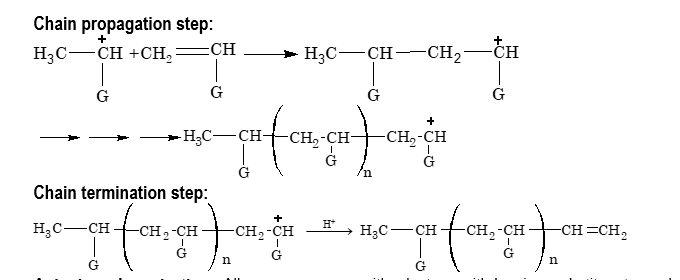
(iii) Anionic polymerization:
Alkene monomers with electron withdrawing substituents such as C₆H₅, CN, COOR etc. can be polymerized by an anionic mechanism as well as by a free radical mechanism. Anionic polymerization, like free radical polymerization, occurs by a chain reaction pathway in presence of strong bases such as Na, K, K⁺NH₂⁻, Li⁺NH₂⁻ etc., or organometallic compounds such as n–butyl lithium as initiators.
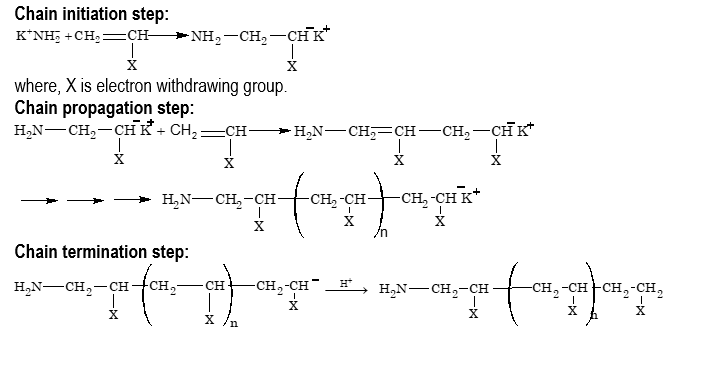
Condensation Polymerization
If two reacting molecules have one functional group each, the reaction stops after one step. For example, acetic acid reacts with ethyl alcohol to form ethyl acetate in one step.

If, however, one of the reacting molecule has two functional groups and the other has one functional group, i.e. acetic acid and ethylene glycol, the reaction stops after two steps.

However, when both the reactants have two functional groups each, they undergo a series of condensation reactions in a controlled stepwise manner with elimination of water molecules to form polymers.
Illustration 6:
Question: Nylon–66 is a polyamide of
(A) vinylchloride and formaldehyde (B) adipic acid and methylamine
(C) adipic acid and hexamethylene diamine (D) formaldehyde and melamine
Solution: (C)
HO–CO–(CH₂)₄–CO–OH + H₂N–(CH₂)₆–NH₂
→ [–CO–(CH₂)₄–CO–NH–(CH₂)₆–NH–]ₙ
Nylon-66
Exercise 3
Bakelite is obtained from phenol by reacting it with
(A) acetaldehyde (B) acetal (C) formaldehyde (D) chlorobenzene
SOME POLYMERS AND THEIR USES
Some important polymers and their uses along with their monomeric units are given in the following table:
| S. No. | Polymers | Monomer | Uses |
| 1. | Polyvinyl chloride (PVC) | Vinyl chloride (CH2 = CH – Cl) | Food wrapping fibres, also used for making shower curtains, shoe soles etc. |
| 2. | Polytetrafluoro ethylene (Teflon) | Tetrafluoro ethylene (CF2 = CF2) | For making non–stick utensil, gaskets, pump packing etc. |
| 3. | Polystyrene | Styrene (Ph – CH = CH2) | In the manufacture of lenses, light covers, light shades etc. |
| 4. | Nylon–66 | Adipic acid and hexamethylenediamine | For making fibres, carpets etc., as a substitute for metals in bearings and gears. |
| 5. | Terylene or Dacron | Ethylene glycol and terephthalic acid | Fibres of terylene are used for the manufacture of wash and wear fabrics, tyre cords, seat belts etc. |
| 6. | Bakelite | Phenol and formaldehyde | As binding glue for laminated wooden planks and in varnishes and lacquers. |
Illustration 7: Which of the following is not a biopolymer?
(A) Proteins
(B) Nucleic acids
(C) Cellulose
(D) Neoprene
Solution: (D).
Exercise 4: Suppose group (A) in the compound CH2 = CH – A, is say –Cl or –CN or –COOC2H5, then corresponding polymer would be respectively
(A) PAN, PVA, PMMA
(B) PVC, PAN, poly ethyl acrylate
(C) PAN, PVA, PVE
(D) None of the above
ANSWER TO EXERCISE
Exercise 1: A
Exercise 2: B
Exercise 3: C
Exercise 4: B
Solved Examples
- Which one of the following is not a surfactant?

Sol. (B). A surfactant has both acidic as well as basic groups.
- Which of the following does not behave as a surfactant?
(A) Soap
(B) Detergent
(C) Phospholipid
(D) Triglycerides
Sol. (D). Triglycerides do not have polar heads and non–polar tails and hence do not behave as surfactants.
- Which of the following are monoliquid propellants?
(A) H2O2
(B) CH3ONO2
(C) CH3NO2
(D) All of the above
Sol. (D).
- A hybrid propellant uses
(A) a solid fuel and a liquid oxidizer
(B) a composite solid propellant
(C) a biliquid propellant
(D) a monoliquid propellant
Sol. (A).
A solid fuel and a liquid oxidizer.
- Which of the following is an azo dye?
(A) Orange–1
(B) Malachite green
(C) Indigo
(D) Martius yellow
Sol. (A). Orange–1 is an azo dye.
- Which of the following group is not an auxochrome?

Sol. (D).
- The base of talcum powder is
(A) chalk
(B) magnesium hydrosilicate
(C) sodium aluminium silicate
(D) zinc stearate
Sol. (B).
- Which of the following is not an auxochrome?
(A) OH
(B) NH2
(C) OCH3
(D) SO3H
Sol. (D).
- Which of the following is a synthetic polymer?
(A) Cellulose
(B) PVC
(C) Proteins
(D) Nucleic acids
Sol. (B).
- Which of the following is not a condensation polymer?
(A) Glyptal
(B) Nylon–66
(C) Dacron
(D) PTFE
Sol. (C).
Frequently Asked Questions
No, biomolecules and polymers are not the same thing, but the two concepts are closely related and often overlap. Many of the most important biomolecules are, in fact, polymers. To understand this, it's best to define both terms. A biomolecule is any molecule that is present in a living organism and is essential for one or more biological processes, such as growth, metabolism, or reproduction. This is a very broad category that includes small molecules like water and glucose, as well as massive ones like DNA. A polymer, on the other hand, is a very large molecule (a macromolecule) made up of many smaller, repeating chemical units called monomers, linked together in a chain. Think of a polymer as a long necklace (the polymer) made from many individual beads (the monomers).
The overlap occurs with a specific class of biomolecules called biopolymers. These are polymers that are produced by living organisms. The three main classes of biopolymers are essential to life:
-
Polysaccharides (complex carbohydrates): These are polymers made of repeating monosaccharide (simple sugar) monomers. For example, starch is a polymer of glucose used for energy storage in plants.
-
Proteins: These are polymers made of amino acid monomers linked by peptide bonds. They perform a vast array of functions, from acting as enzymes to providing structural support.
-
Nucleic Acids (DNA and RNA): These are polymers made of nucleotide monomers. They store and transmit our genetic information.
However, there are many crucial biomolecules that are not polymers. The most significant example is lipids (fats, oils, steroids). While large, they are not made of a repeating chain of monomers. Similarly, the monomers themselves like a single glucose molecule or an individual amino acid are also vital biomolecules. Therefore, the correct way to think about it is that "biopolymers" are a major and essential subset of "biomolecules.
In the context of biomolecules, a polymer refers to a biopolymer a large, complex molecule essential for life, constructed by linking together smaller, repeating molecular units known as monomers. The process of linking these monomers is called polymerization. These are not to be confused with synthetic polymers like plastic or nylon; biopolymers are the naturally occurring polymers that form the very fabric and machinery of living organisms. Their structure is directly tied to their biological function, making them the cornerstones of biochemistry and molecular biology. The sequence and chemical nature of the monomers in the chain determine the final three-dimensional shape and, consequently, the specific role of the biopolymer in a cell.
Let's look at the primary examples to understand their meaning and significance:
-
Proteins as Polymers: Proteins are polymers of amino acids. There are 20 different types of amino acids that can be arranged in any sequence. This sequence dictates how the protein chain folds into a unique 3D structure, enabling it to function as an enzyme, a transport molecule like hemoglobin, or a structural component like keratin in hair. The sheer versatility of proteins comes from this polymeric nature.
-
Nucleic Acids as Polymers: DNA and RNA are polymers of nucleotides. The sequence of the four different nucleotides in a DNA strand (A, T, C, G) acts as a code, storing the genetic blueprint for the entire organism. This polymer chain allows for the storage of immense amounts of information in a stable, compact form.
-
Polysaccharides as Polymers: Complex carbohydrates like starch and cellulose are polymers of a single monomer, glucose. In starch, the way glucose units are linked makes it easily digestible for energy. In cellulose, a slightly different linkage creates rigid fibers that give plants their structural integrity, which most animals cannot digest. This shows how a simple change in the polymeric structure can lead to a completely different biological function.
Biomolecules are the chemical compounds that are naturally found in living organisms and are fundamental to sustaining life. They are often referred to as the "building blocks of life" because they form the structures of cells and tissues, and they are also the machinery that carries out the myriad processes necessary for an organism to live, grow, and reproduce. The study of biomolecules is a central part of biochemistry. These molecules range in size from very small, like water and simple ions, to very large macromolecules. While thousands of different biomolecules exist, they can be organized into four primary classes, each with distinct structures and functions.
The four major classes of biomolecules are:
-
Carbohydrates: Composed primarily of carbon, hydrogen, and oxygen, carbohydrates are the body's main source of energy. The simplest form is a monosaccharide, like glucose. These can be linked together to form large polysaccharides, such as starch for energy storage in plants or cellulose for structural support.
-
Lipids: This is a diverse group of molecules, including fats, oils, waxes, and steroids, that are generally insoluble in water. Lipids are crucial for long-term energy storage, insulation, and forming the protective barrier of cell membranes (phospholipids). They also serve as chemical messengers in the form of steroid hormones.
-
Proteins: Often called the "workhorses" of the cell, proteins are the most functionally diverse biomolecules. They are made of amino acid monomers. Proteins act as enzymes to catalyze chemical reactions, provide structural support (e.g., collagen), transport substances (e.g., hemoglobin), and play a key role in the immune system (antibodies).
-
Nucleic Acids: These are DNA (deoxyribonucleic acid) and RNA (ribonucleic acid). Their primary function is to store, transmit, and express genetic information. DNA contains the instructions for building and operating an entire organism, while RNA helps carry out these instructions.
Together, these four classes of biomolecules work in a highly coordinated manner to create and maintain the complex system we know as life.
जैव अणुओं (biomolecules) के संदर्भ में, बहुलक (polymer) का अर्थ एक जैव-बहुलक (biopolymer) से है। यह एक बहुत बड़ा और जटिल अणु होता है जो जीवन के लिए अत्यंत आवश्यक है। इसका निर्माण कई छोटी, दोहराई जाने वाली रासायनिक इकाइयों, जिन्हें मोनोमर (monomer) कहा जाता है, को एक साथ एक श्रृंखला में जोड़ने से होता है। इन मोनोमर्स को जोड़ने की प्रक्रिया को बहुलकीकरण (polymerization) कहते हैं। ये बहुलक हमारे आस-पास के सिंथेटिक प्लास्टिक या नायलॉन जैसे नहीं होते; जैव-बहुलक प्राकृतिक रूप से जीवित प्राणियों द्वारा बनाए जाते हैं और उनके शरीर की संरचना और कार्यप्रणाली का आधार होते हैं। इनकी सबसे महत्वपूर्ण बात यह है कि मोनोमर का क्रम और उनकी रासायनिक प्रकृति ही बहुलक के अंतिम त्रि-आयामी (3D) आकार और उसके विशिष्ट जैविक कार्य को निर्धारित करती है।
आइए, इसके प्रमुख उदाहरणों से इसका अर्थ और महत्व समझें:
-
प्रोटीन एक बहुलक के रूप में: प्रोटीन अमीनो एसिड नामक मोनोमर के बहुलक होते हैं। प्रकृति में पाए जाने वाले 20 विभिन्न प्रकार के अमीनो एसिड किसी भी क्रम में जुड़कर प्रोटीन श्रृंखला बना सकते हैं। यह क्रम तय करता है कि प्रोटीन किस प्रकार एक अद्वितीय 3D संरचना में मुड़ेगा, जो उसे एंजाइम के रूप में काम करने, हीमोग्लोबिन की तरह परिवहन करने, या बालों में केराटिन की तरह संरचना प्रदान करने में सक्षम बनाता है।
-
न्यूक्लिक एसिड एक बहुलक के रूप में: डीएनए (DNA) और आरएनए (RNA) न्यूक्लियोटाइड नामक मोनोमर के बहुलक हैं। डीएनए श्रृंखला में चार अलग-अलग न्यूक्लियोटाइड (A, T, C, G) का क्रम एक कोड के रूप में काम करता है, जो पूरे जीव की आनुवंशिक जानकारी को संग्रहीत करता है। यह बहुलक श्रृंखला बड़ी मात्रा में जानकारी को एक स्थिर और सुगठित रूप में संग्रहीत करने की अनुमति देती है।
-
पॉलीसैकराइड एक बहुलक के रूप में: स्टार्च और सेलूलोज़ जैसे जटिल कार्बोहाइड्रेट ग्लूकोज नामक एक ही मोनोमर के बहुलक हैं। स्टार्च में, ग्लूकोज इकाइयों को जिस तरह से जोड़ा जाता है, वह ऊर्जा के लिए आसानी से पचने योग्य बनाता है। वहीं, सेलूलोज़ में एक थोड़े अलग जुड़ाव से कठोर रेशे बनते हैं जो पौधों को संरचनात्मक मजबूती देते हैं, जिसे अधिकांश जानवर पचा नहीं सकते।
बायोमोलेक्यूलस का पोलीमराइजेशन (polymerization) वह रासायनिक प्रक्रिया है जिसके द्वारा छोटे जैविक अणु, जिन्हें मोनोमर (monomers) कहा जाता है, आपस में जुड़कर एक लंबी श्रृंखला या नेटवर्क बनाते हैं, जिसे बायोपॉलिमर (biopolymer) कहा जाता है। यह प्रक्रिया जीवन के सबसे जटिल और आवश्यक अणुओं, जैसे प्रोटीन, डीएनए और स्टार्च के निर्माण का आधार है। यह मोनोमर्स को एक-एक करके श्रृंखला में जोड़कर एक विशाल अणु बनाने जैसा है। इस प्रक्रिया में, मोनोमर्स के बीच मजबूत सहसंयोजक बंध (covalent bonds) बनते हैं, जो बायोपॉलिमर को स्थिरता प्रदान करते हैं।
जैविक प्रणालियों में, यह प्रक्रिया मुख्य रूप से एक विशेष प्रकार की अभिक्रिया के माध्यम से होती है जिसे संघनन अभिक्रिया (condensation reaction) या निर्जलीकरण संश्लेषण (dehydration synthesis) कहा जाता है। इस अभिक्रिया में, जब दो मोनोमर एक साथ जुड़ते हैं, तो एक मोनोमर से हाइड्रोजन (-H) परमाणु और दूसरे मोनोमर से हाइड्रॉक्सिल (-OH) समूह निकल जाता है, जो मिलकर पानी का एक अणु (H2O) बनाते हैं। पानी के इस अणु के निकलने से दोनों मोनोमर्स के बीच एक नया बंधन बन जाता है।
-
प्रोटीन निर्माण: अमीनो एसिड (मोनोमर) पेप्टाइड बंध (peptide bond) के माध्यम से जुड़कर पॉलीपेप्टाइड श्रृंखला (प्रोटीन) बनाते हैं। प्रत्येक पेप्टाइड बंध के निर्माण में पानी का एक अणु निकलता है।
-
पॉलीसैकराइड निर्माण: मोनोसैकराइड (जैसे ग्लूकोज) ग्लाइकोसिडिक बंध (glycosidic bond) के माध्यम से जुड़कर स्टार्च या सेलूलोज जैसे पॉलीसैकराइड बनाते हैं।
-
न्यूक्लिक एसिड निर्माण: न्यूक्लियोटाइड फॉस्फोडाइस्टर बंध (phosphodiester bond) के माध्यम से जुड़कर डीएनए या आरएनए श्रृंखला बनाते हैं।
इस प्रक्रिया का विपरीत जलापघटन (hydrolysis) है, जिसमें पानी का एक अणु जोड़कर बहुलक को वापस उसके मोनोमर्स में तोड़ा जाता है। यह प्रक्रिया पाचन के दौरान भोजन को तोड़ने के लिए महत्वपूर्ण है।
The four main classes of large biological molecules, or biomolecules, that are essential for all known forms of life are carbohydrates, lipids, proteins, and nucleic acids. Each class has a distinct chemical structure and performs a unique set of functions within an organism. They are the fundamental components that make up cells and power their activities.
Here’s a detailed look at each of the four main types:
1. Carbohydrates
Carbohydrates are the primary source of energy for living organisms. They are made up of carbon, hydrogen, and oxygen atoms, usually in a ratio of 1:2:1. The basic unit, or monomer, of a carbohydrate is a monosaccharide (simple sugar), such as glucose and fructose. When two monosaccharides link together, they form a disaccharide, like sucrose (table sugar). Long chains of monosaccharides form polysaccharides, which serve as energy storage (starch in plants, glycogen in animals) or structural components (cellulose in plant cell walls, chitin in the exoskeletons of insects).
2. Lipids
Lipids are a diverse group of molecules that are nonpolar and insoluble in water. They include fats, oils, waxes, phospholipids, and steroids. Unlike the other three biomolecules, lipids are not true polymers because they are not formed from a repeating chain of identical monomers. Their primary functions include long-term energy storage, providing insulation, and forming the structural basis of cell membranes (phospholipids). Steroids, a type of lipid characterized by a four-fused-ring structure, act as important signaling molecules (hormones) like testosterone and cholesterol.
3. Proteins
Proteins are the most versatile biomolecules, performing a vast range of critical tasks. They are polymers composed of amino acid monomers linked together by peptide bonds. There are 20 different types of amino acids, and their specific sequence determines the protein's unique three-dimensional structure and function. Proteins act as enzymes (catalyzing biochemical reactions), provide structural support (collagen in skin, keratin in hair), transport substances (hemoglobin carries oxygen), enable movement (actin and myosin in muscles), and defend the body as antibodies.
4. Nucleic Acids
Nucleic acids are responsible for storing and transmitting genetic information. They are polymers made of nucleotide monomers. Each nucleotide consists of a sugar, a phosphate group, and a nitrogenous base. There are two main types:
-
Deoxyribonucleic acid (DNA): DNA stores the genetic blueprint of an organism in the sequence of its bases (Adenine, Guanine, Cytosine, Thymine). It exists as a double helix structure.
-
Ribonucleic acid (RNA): RNA is typically single-stranded and plays a crucial role in translating the genetic code from DNA into proteins. It uses the base Uracil instead of Thymine.
Yes, Polymers are a very important chapter in the JEE Mains chemistry syllabus. It is a high-yield topic, and students can typically expect at least one, and sometimes two, questions from this chapter in the exam. This translates to 4-8 marks, which can be crucial for achieving a good rank. The chapter is generally considered part of organic chemistry and is known for being relatively straightforward and scoring, as the questions are often direct and based on knowledge rather than complex problem-solving. A thorough understanding of the concepts and facts presented in the NCERT textbook is usually sufficient to answer the questions correctly.
The JEE Mains syllabus for Polymers covers several key areas that students must focus on for effective preparation:
-
Classification: Understanding the different ways polymers are classified is fundamental. This includes classification based on source (natural, semi-synthetic, synthetic), structure (linear, branched, cross-linked), mode of polymerization (addition, condensation), and molecular forces (elastomers, fibres, thermoplastics, thermosetting plastics).
-
Types of Polymerization Reactions: Students need to know the mechanisms of addition (or chain-growth) polymerization and condensation (or step-growth) polymerization, including examples for each.
-
Important Polymers and their Uses: A significant portion of the questions comes from this area. You must memorize the monomers, repeating structures, and common uses of commercially important polymers like Polythene, Teflon, PVC, Polystyrene, Nylon-6,6, Nylon 6, Bakelite, Terylene (Dacron), and rubbers (natural and synthetic).
-
Biopolymers and Biodegradable Polymers: The syllabus also includes an introduction to biopolymers like starch, cellulose, proteins, and nucleic acids, as well as the concept and examples of biodegradable polymers like PHBV and Nylon 2-nylon 6.
To excel in this chapter, it is highly recommended to create concise notes, focusing on tables of monomers and their corresponding polymers, and to solve all previous year questions (PYQs) to get familiar with the pattern and types of questions asked.
Polymers can be classified in various ways, but one of the most common and useful classification systems is based on the intermolecular forces that exist between the polymer chains. These forces determine the material's mechanical properties, such as its strength, elasticity, and melting point. Based on this, polymers can be divided into four main types: elastomers, fibres, thermoplastics, and thermosetting polymers.
1. Elastomers
Elastomers are rubber-like solid polymers that can be stretched to several times their original length and return to their original shape and size when the stretching force is removed. This high elasticity is due to the presence of very weak intermolecular forces (van der Waals forces) and a few cross-links between the polymer chains. The cross-links prevent the chains from slipping past each other permanently. When stretched, the coiled chains straighten out, but they snap back to their original compact state once the force is released.
-
Examples: Natural rubber, Buna-S, Buna-N, and Neoprene.
2. Fibres
Fibres are thread-forming polymers that possess high tensile strength and a high modulus. These characteristics are due to strong intermolecular forces, such as hydrogen bonding or dipole-dipole interactions, between the polymer chains. These strong forces cause the chains to be packed closely together, resulting in a crystalline nature. This tight packing makes the fibres strong and resistant to stretching.
-
Examples: Nylon-6,6 (polyamide), Terylene or Dacron (polyester), and silk (natural fibre).
3. Thermoplastics
Thermoplastic polymers are materials that soften and become fluid when heated and harden again when cooled. This process is reversible and can be repeated multiple times without significant chemical change, which makes them easily moldable and recyclable. In these polymers, the intermolecular forces are intermediate between those of elastomers and fibres. There are no cross-links between the chains. When heated, the kinetic energy overcomes the intermolecular forces, allowing the chains to slide past one another.
-
Examples: Polyethylene (polythene), Polyvinyl chloride (PVC), Polystyrene, and Teflon.
4. Thermosetting Polymers
Thermosetting polymers, or thermosets, are polymers that become permanently hard and rigid when heated. During their initial heating and molding, extensive cross-links form between the polymer chains, creating a rigid three-dimensional network structure. Once these cross-links are formed, the polymer cannot be softened or remolded by reheating. If heated to a very high temperature, it will decompose or burn rather than melt. They are hard, strong, and brittle.
-
Examples: Bakelite (used in electrical switches), Urea-formaldehyde resin (used for making unbreakable crockery), and epoxy resins.
A polymer is a very large molecule, also known as a macromolecule, that is composed of many small, repeating chemical subunits called monomers. The word "polymer" itself provides a clue to its meaning, originating from the Greek words 'poly' meaning "many" and 'mer' meaning "parts." So, a polymer is simply a substance made of "many parts." These monomers are linked together by strong covalent bonds through a chemical process called polymerization. The structure of a polymer can be visualized as a long chain, similar to a necklace made of many individual beads (the monomers) or a freight train composed of many identical railcars (the monomers).
Polymers are ubiquitous and form the basis of both the natural world and modern industrial society.
-
Natural Polymers: Life itself is built upon natural polymers, also called biopolymers. For instance, your DNA, which holds your genetic code, is a polymer made of nucleotide monomers. The proteins that make up your muscles and enzymes are polymers of amino acid monomers. Starch, which you consume for energy, is a polymer of glucose monomers.
-
Synthetic Polymers: Humans have learned to create artificial polymers in laboratories, which have revolutionized modern life. These synthetic polymers are the foundation of materials like plastics, fabrics, and adhesives. For example, polyethylene, made from ethene monomers, is used to make plastic bags and bottles. Polyvinyl chloride (PVC), from vinyl chloride monomers, is used for pipes and flooring. Nylon, a synthetic fiber, is used in clothing and ropes.
The properties of a polymer, such as its strength, flexibility, and melting point, are determined by the type of monomer used, the length of the polymer chains, and the way the chains are arranged and interact with each other.
Yes, a protein is absolutely a polymer. To be more specific, it is a naturally occurring polymer, which is also known as a biopolymer. Proteins are among the most complex and functionally diverse molecules in living organisms, and their polymeric nature is the key to their versatility. The repeating monomer units that are linked together to form a protein are called amino acids. There are 20 common types of amino acids that serve as the building blocks for nearly all proteins on Earth.
The polymerization process for proteins involves linking these amino acid monomers together via a specific type of covalent bond called a peptide bond. This bond is formed in a dehydration synthesis reaction, where a molecule of water is removed to connect the carboxyl group of one amino acid to the amino group of the next. The resulting chain of amino acids linked by peptide bonds is called a polypeptide. A functional protein can consist of a single polypeptide chain or multiple chains that have been intricately folded into a precise and stable three-dimensional structure.
This structure is critical because a protein's function is entirely dependent on its shape. The specific sequence of the amino acid monomers in the polypeptide chain dictates how it will fold. This final 3D shape allows the protein to perform its designated role, whether it's catalyzing a metabolic reaction as an enzyme, providing structural support like collagen, transporting oxygen like hemoglobin, or acting as an antibody in the immune system. Therefore, thinking of a protein as a polymer of amino acids is fundamental to understanding its structure and biological function.
The importance of biomolecules cannot be overstated; they are, quite literally, the substance of life. Every structure and every process in a living organism, from the smallest bacterium to the largest whale, is governed by the intricate interactions of biomolecules. Without them, life as we know it would be impossible. Their importance can be understood by examining their four primary roles: as structural components, sources of energy, carriers of information, and catalysts for biochemical reactions.
-
Structural Building Blocks: Biomolecules provide the physical framework for cells and organisms. Proteins like collagen and keratin form the basis of connective tissues, skin, and hair. Lipids, specifically phospholipids, create the cell membranes that enclose every cell, controlling what enters and leaves. In plants, the carbohydrate cellulose forms the rigid cell wall, providing structural support. These molecules are the bricks and mortar that build the architecture of living things.
-
Energy and Fuel: Life requires a constant input of energy, and biomolecules are the primary fuel source. Carbohydrates, particularly glucose, are the main source of immediate energy for most organisms, powering cellular activities through processes like cellular respiration. When energy is abundant, it can be stored for later use. Lipids (fats) serve as a highly efficient long-term energy reserve.
-
Information Storage and Transfer: The continuity of life from one generation to the next depends on the faithful storage and transmission of genetic information. This crucial task is handled by nucleic acids. DNA (deoxyribonucleic acid) acts as the master blueprint, containing all the instructions needed to build and operate an organism. RNA (ribonucleic acid) helps to read this blueprint and translate it into functional proteins.
-
Catalysis and Regulation: The thousands of chemical reactions that occur in a cell every second must happen quickly and efficiently. Proteins that function as enzymes act as biological catalysts, dramatically speeding up these reactions without being consumed. Other biomolecules, such as hormones (which can be lipids or proteins), act as signals to regulate and coordinate complex biological processes like growth, metabolism, and development.
In essence, biomolecules are responsible for every aspect of an organism's existence its form, its function, its growth, and its ability to reproduce.
The origin of biomolecules is a fundamental question tied to the origin of life itself, a field of study known as abiogenesis. The prevailing scientific hypothesis is that the first biomolecules—the simple organic monomers like amino acids and nucleotides arose from simpler, inorganic molecules on the primordial Earth through a process of chemical evolution. This occurred under conditions very different from today's world, in an atmosphere that lacked free oxygen and was rich in other gases.
The most famous framework for this idea is the Oparin-Haldane hypothesis, or "primordial soup" theory. Proposed independently in the 1920s by Alexander Oparin and J.B.S. Haldane, it suggests that early Earth's oceans were a vast mixture of chemicals. The atmosphere contained gases like methane (CH4), ammonia (NH3), water vapor (H2O), and hydrogen (H2). Energy sources such as intense lightning, volcanic eruptions, and powerful ultraviolet (UV) radiation from the sun could have driven chemical reactions among these simple gases, leading to the spontaneous formation of the first organic monomers. These monomers would have then accumulated in the oceans, creating a "primordial soup" from which more complex structures, and eventually life, could emerge.
This hypothesis gained powerful experimental support in 1952 with the landmark Miller-Urey experiment. Scientists Stanley Miller and Harold Urey designed a closed apparatus to simulate the conditions of early Earth. They filled it with the proposed gases (methane, ammonia, hydrogen, and water) and introduced electrical sparks to mimic lightning. After just one week of running the experiment, they analyzed the contents and found that various organic molecules had formed, including several of the amino acids that are the building blocks of proteins. This groundbreaking result demonstrated that the essential components of life could indeed arise from non-living inorganic matter under plausible early Earth conditions. While modern hypotheses also explore other potential sites for abiogenesis, such as deep-sea hydrothermal vents or the delivery of organic matter from meteorites, the Miller-Urey experiment remains a cornerstone in our understanding of how biomolecules may have originated.
In the JEE Mains Chemistry paper, you can consistently expect one to two questions to be asked directly from the "Biomolecules" chapter. This corresponds to a weightage of approximately 4 to 8 marks out of the 120 total marks for the chemistry section. While this might not seem like a large number, in a highly competitive exam like JEE Mains, these marks can make a significant difference in your overall percentile and rank. Furthermore, the Biomolecules chapter is widely regarded by students and educators as a high-scoring topic. This is because the questions are typically direct, fact-based, and derived straight from the content of the NCERT textbook, requiring less complex problem-solving compared to topics in physical or inorganic chemistry.
The types of questions frequently asked from this chapter include:
-
Structure and Linkages: Identifying the structures of monosaccharides (like the Haworth projections of glucose and fructose), disaccharides (like sucrose), or recognizing the specific bonds that link monomers, such as glycosidic bonds in carbohydrates and peptide bonds in proteins.
-
Classification: Questions that require you to classify carbohydrates (e.g., as aldose/ketose or monosaccharide/disaccharide/polysaccharide), amino acids (as essential or non-essential), or proteins (as fibrous or globular).
-
Vitamins and Nucleic Acids: A very common question format involves matching vitamins with their chemical names or the diseases caused by their deficiency. You may also be asked about the structural differences between DNA and RNA, or to identify the specific nitrogenous bases (A, T, C, G, U) present in them.
For any student preparing for JEE Mains, this chapter should be a priority. The return on investment for the time spent studying is very high. The best strategy is to thoroughly memorize the key structures, classifications, and facts presented in the NCERT. Creating flashcards for vitamins and amino acids and regularly solving previous year questions (PYQs) is an excellent way to master this chapter and secure these crucial marks.
